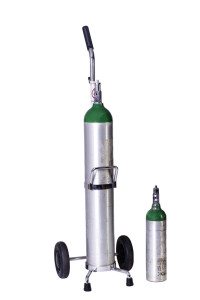 Let’s start with a brief introduction to DME. Durable Medical Equipment includes a broad range of medical equipment such as oxygen concentrators and tanks, wheelchairs, CPAP machines and many others. Under traditional Medicare, part B covers 80% of the cost of such equipment and the patient covers the remaining 20%. If patients have a secondary insurance or “MediGap” coverage then the 20% is generally covered by that and the patient does not have any responsibilities (after deductibles are met).
Let’s start with a brief introduction to DME. Durable Medical Equipment includes a broad range of medical equipment such as oxygen concentrators and tanks, wheelchairs, CPAP machines and many others. Under traditional Medicare, part B covers 80% of the cost of such equipment and the patient covers the remaining 20%. If patients have a secondary insurance or “MediGap” coverage then the 20% is generally covered by that and the patient does not have any responsibilities (after deductibles are met).
In 2009, Medicare changed the way that they contracted with DME providers (companies that rent or sell medical equipment to Medicare patients). In the past, Medicare did business with hundreds of companies across the country. Many patients received service from small local companies that provided outstanding service. More recently, Medicare policy changed and they now only do business with DME companies that meet certain criteria. This had the effect of tremendous consolidation in the DME provider marketplace (where there used to be 20+ providers, we now have about a 25% as many).
Unfortunately, an unanticipated consequence of the contraction in the number of DME providers has been a dramatic decrease in the perceived customer service provided. I hear form my patients on a daily basis about horror stories of oxygen providers that just skip their delivery or deliver 4 oxygen tanks a week when five times that amount are needed. Complaints are ignored and there is no real mechanism to escalate.
Let’s look at oxygen as an example. If you need oxygen and your physician properly documents it, then Medicare must cover it. Your doctor sends an order to a DME company to initiate service. This turns out to be a major decision as you are basically locked into a relationship with this DME Company for a 5-year period. For oxygen concentrators, Medicare basically pays for 5 years of service over the first 3 years of the program. During this 5-year period, the DME Company may not charge you extra for equipment or service. You are basically married to the DME Company and can only change if you move or the DME Company is unable to provide service. The provider that provides the service in the 36th month is on the hook for providing your oxygen and service for the next 24 months.
If your DME provider is not meeting their obligation then you should complain to Medicare (1-800-MEDICARE). If you have commercial insurance then complain to your insurance provider. Complain often and loudly as the squeaky wheel gets oiled. Your doctor will help as best they can.